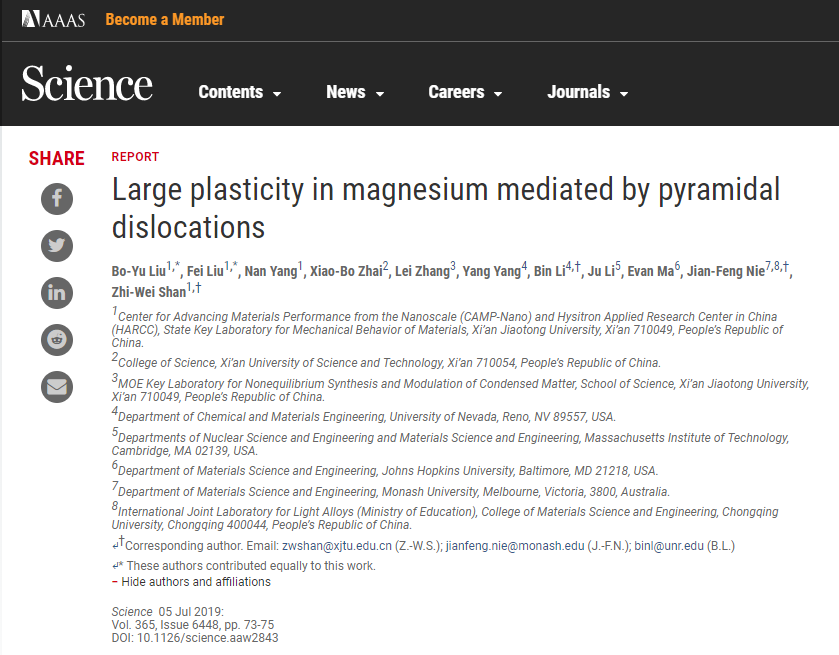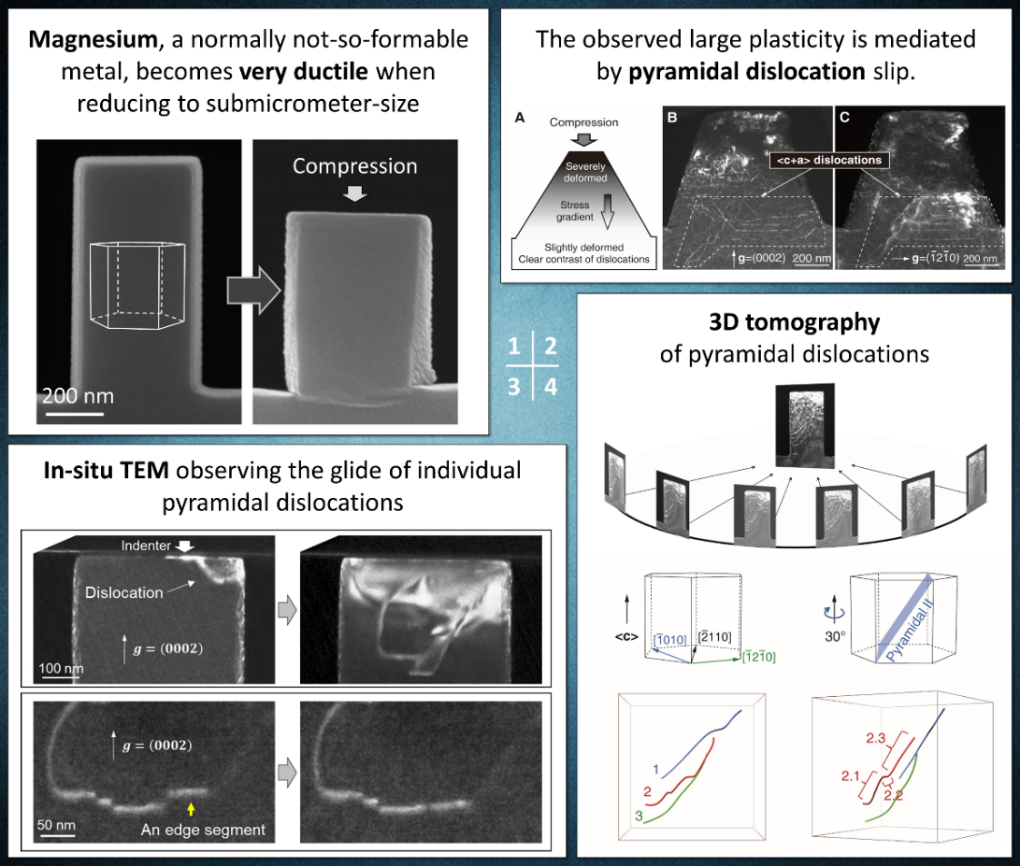
Magnesium is the lightest structural metal, with proper alloying and heat treatment it can reach strengths comparable to those of some Al alloys but be 35% lighter. However, the limited ductility of magnesium makes the processing and forming of profiles and components difficult and costly. This hampers the widespread applications of magnesium products. The low ductility has been attributed to pyramidal dislocations failing to accommodate plastic strain. The glissile pyramidal dislocations are thought to be intrinsically unstable by readily transforming into sessile structures. However, such glissile-to-sessile transformation of pyramidal dislocation is not observed in some recent simulation studies. Controversy surrounds the fundamental behavior of pyramidal dislocations, such as their ability to accommodate plastic strain. This creates difficulties in rationalizing the mechanical behavior and for alloy design.
Shan’s group, from Xi’an Jiaotong University (State Key Laboratory for Mechanical Behavior of Materials, School of Materials Science and Engineering, Center for Advancing Materials Performance from the Nanoscale (CAMP-Nano), using advanced in situ TEM mechanical testing and three-dimensional (3D) image reconstruction, demonstrated very large plastic strains mediated by pyramidal dislocations gliding on both pyramidal I and pyramidal II planes. The submicrometer-size magnesium samples are much more ductile than their bulk counterparts. Small crystal size usually brings high stress, which in turn activates more pyramidal dislocations to accommodate plasticity.

In situ TEM mechanical testing and 3D tomography show large plasticity in magnesium mediated by glissile pyramidal dislocations
The above findings provide information on the mobility of pyramidal dislocations and its relationship with plasticity in magnesium, as well as insights into strategies for achieving plasticity in magnesium that is normally difficult to form at room temperature. This research reinforces the idea that promoting pyramidal dislocation activity in magnesium can increase its processability. The in-situ TEM mechanical testing and 3D tomography can be extended to study the mechanical behavior of other hexagonal metals. The result is published on Science (Vol. 365, Issue 6448, pp. 73-75, DOI: 10.1126/science.aaw2843).
This work is supported by the National Key Research and Development Program of China, National Natural Science Foundation of China, 111 Project 2.0, China Postdoctoral Science Foundation, the Science and Technology Department of Shaanxi Province and other funds.


